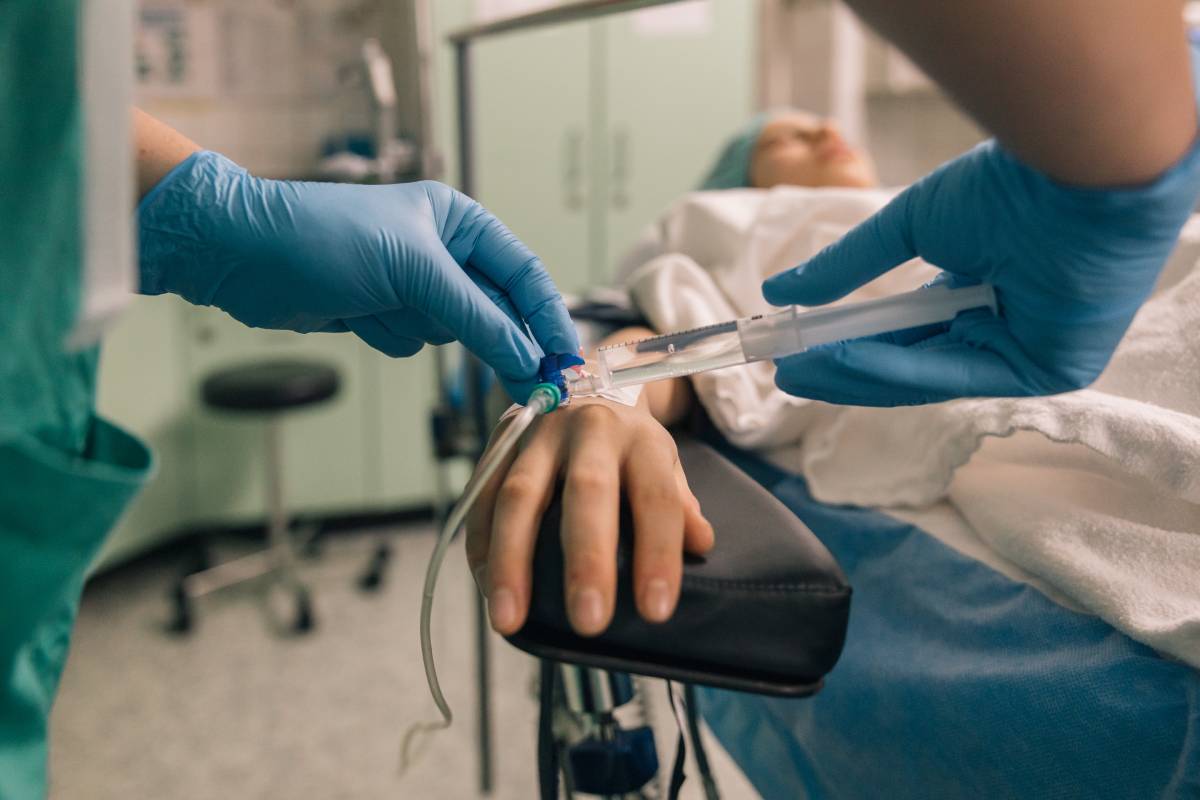GLP-1 Agonists and Risk Under Anesthesia
Pharmacological treatment for diabetes typically consists of a combination of insulin and non-insulin glucose-lowering agents to facilitate glycemic control. Due to the risk of lactic acidosis, hypoglycemia, and ketoacidosis, the current perioperative recommendation for non-insulin agents is to withhold the medication on the day of surgery.1 Recent advances in treatment of diabetes mellitus introduced long-acting glucagon-like peptide-1 receptor agonist drugs (GLP-1 RA), which have also become popular for their impacts on weight loss. However, the unique impacts of GLP-1 agonists on relevant organ systems can modify patient risk under anesthesia, prompting a re-evaluation of the standing practice of stopping anti-diabetic medications on the morning of surgery.2
GLP-1, as produced naturally, is an incretin hormone that lowers glycemia by increasing insulin production and secretion from pancreatic beta cells, while simultaneously reducing glucagon secretion from alpha cells. These pancreatic effects only occur during hyperglycemia; therefore, the medication does not increase risk of hypoglycemia. Additionally, as demonstrated by preclinical studies, GLP-1 RA have cardioprotective effects that are independent of their designed function, including increased metabolic efficiency and myocardial resistance to ischemia, as well as activation of ischemic preconditioning pathways, which are crucial in limiting the detrimental effects of ischemia.3 Human studies have noted further cardioprotective effects of GLP-1 RA, namely improvements in left ventricular dysfunction, global wall motion index scores, and regional wall motion index scores. Wall motion index scores are a composite average of myocardial segments and are associated with contractile function of the heart.4
The cardioprotective effects of GLP-1 RA, which are not exclusive to diabetes patients, make these drugs useful in both inpatient and outpatient care schedules. Furthermore, GLP-1 RA are typically long-acting due to their long half-life, which means effective discontinuation would require withholding the drug for ~2 weeks, limiting glycemic control for a similar period.2 These factors prompt some healthcare practitioners to propose stopping GLP-1 agonists before surgery and anesthesia is impractical and could create more problems for the patient than the risk of continuing with them still in the patient’s system.
While these cardioprotective effects enable GLP-1 RA to be used in non-diabetic patients, the drugs have come under scrutiny within the fields of anesthesia and surgery for their gastrointestinal side-effects. In 2023, an observational study was conducted using gastric ultrasound on fasted volunteer participants taking GLP-1 RA. 90% of volunteers taking GLP-1 RA showed evidence of residual solids in the stomach (compared to 20% of controls); 2 hours later, 70% of participants on GLP-1 RA still had solids identified on ultrasound.5,6 These results demonstrated delayed gastric emptying in patients taking GLP-1 agonists, which poses a perioperative concern by increasing the risk of pulmonary aspiration of regurgitated gastric contents under anesthesia. A 2022 study also noted an increase in residual gastric content in patients taking GLP-1 RA, versus a control group, although this difference was not statistically significant.7 Indeed, the anecdotal and observational evidence has created anxiety around the continued use of GLP-1 RA in the perioperative setting, encouraging anesthesiologists to maintain the existing practice of withholding diabetic medication before surgery.
The decision to withhold or continue GLP-1 RA therapy preoperatively is one where the literature in the medical field is currently divided. On one hand, GLP-1 RA’s cardioprotective benefits and long-acting nature make stopping therapy an undesirable choice. On the other hand, the gastrointestinal effects associated with GLP-1 RA pose a significant concern in the anesthesia setting. Further research in this area is necessary to provide insight on the potential risk that GLP-1 agonists posefor anesthesia and offer guidelines for optimal perioperative management.
References
- Thiruvenkatarajan, Venkatesan, et al. “Perioperative Diabetic Ketoacidosis Associated with Sodium-Glucose Co-Transporter-2 Inhibitors: A Systematic Review.” British Journal of Anaesthesia, vol. 123, no. 1, July 2019, pp. 27–36. ScienceDirect, https://doi.org/10.1016/j.bja.2019.03.028
- Hulst, Abraham H., et al. “Preoperative Considerations of New Long-Acting Glucagon-like Peptide-1 Receptor Agonists in Diabetes Mellitus.” British Journal of Anaesthesia, vol. 126, no. 3, Mar. 2021, pp. 567–71. DOI.org (Crossref), https://doi.org/10.1016/j.bja.2020.10.023
- Giblett, Joel P., et al. “Glucagon-Like Peptide-1.” JACC: Basic to Translational Science, vol. 1, no. 4, June 2016, pp. 267–76. DOI.org (Crossref), https://doi.org/10.1016/j.jacbts.2016.03.011
- Nikolaidis, Lazaros A., et al. “Effects of Glucagon-Like Peptide-1 in Patients With Acute Myocardial Infarction and Left Ventricular Dysfunction After Successful Reperfusion.” Circulation, vol. 109, no. 8, Mar. 2004, pp. 962–65. DOI.org (Crossref), https://doi.org/10.1161/01.CIR.0000120505.91348.58
- Jones, Philip M., et al. “Anesthesia and Glucagon-like Peptide-1 Receptor Agonists: Proceed with Caution!” Canadian Journal of Anesthesia/Journal Canadien d’anesthésie, vol. 70, no. 8, Aug. 2023, pp. 1281–86. Springer Link, https://doi.org/10.1007/s12630-023-02550-y
- Sherwin, Marc, et al. “Influence of Semaglutide Use on the Presence of Residual Gastric Solids on Gastric Ultrasound: A Prospective Observational Study in Volunteers without Obesity Recently Started on Semaglutide.” Canadian Journal of Anesthesia/Journal Canadien d’anesthésie, vol. 70, no. 8, Aug. 2023, pp. 1300–06. Springer Link, https://doi.org/10.1007/s12630-023-02549-5
- Stark, Jennifer E., et al. “Impact of Glucagon-Like Peptide-1 Receptor Agonists (GLP-1RA) on Food Content During Esophagogastroduodenoscopy (EGD).” Annals of Pharmacotherapy, vol. 56, no. 8, Aug. 2022, pp. 922–26. DOI.org (Crossref), https://doi.org/10.1177/10600280211055804
More From The Blog

Common Adult ENT Procedures in the Outpatient Setting
A number of Ear, Nose, and Throat (ENT) procedures can be performed in outpatient settings. These procedures are typically minimally invasive, allowing patients to return home the same day without the need for extended recovery in a hospital.

When is Medication Dosage Based on Patient Weight?
When administering or prescribing medications, it is crucial for providers to understand the rationale behind the recommended dosage. Medication dosage must take into account the